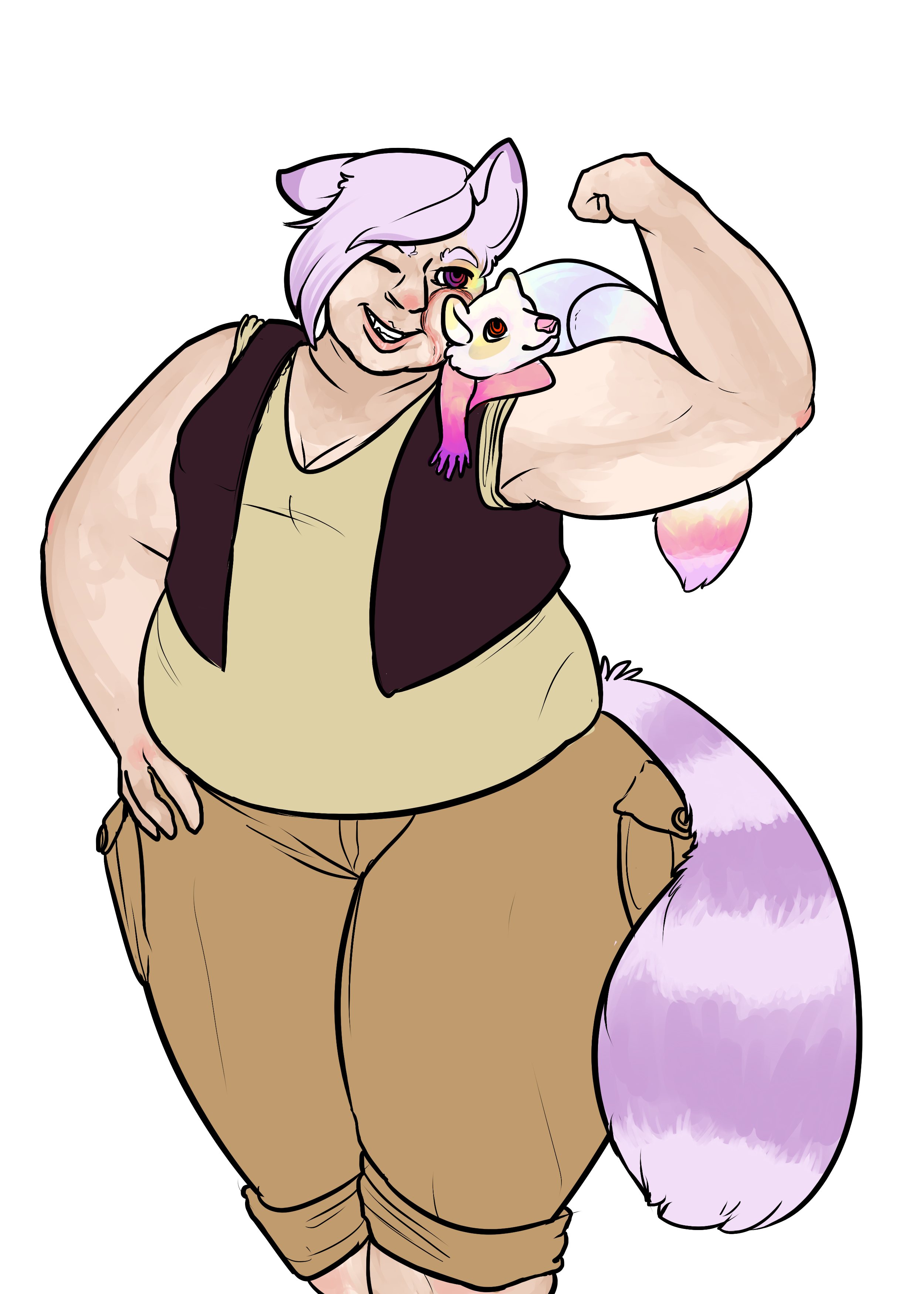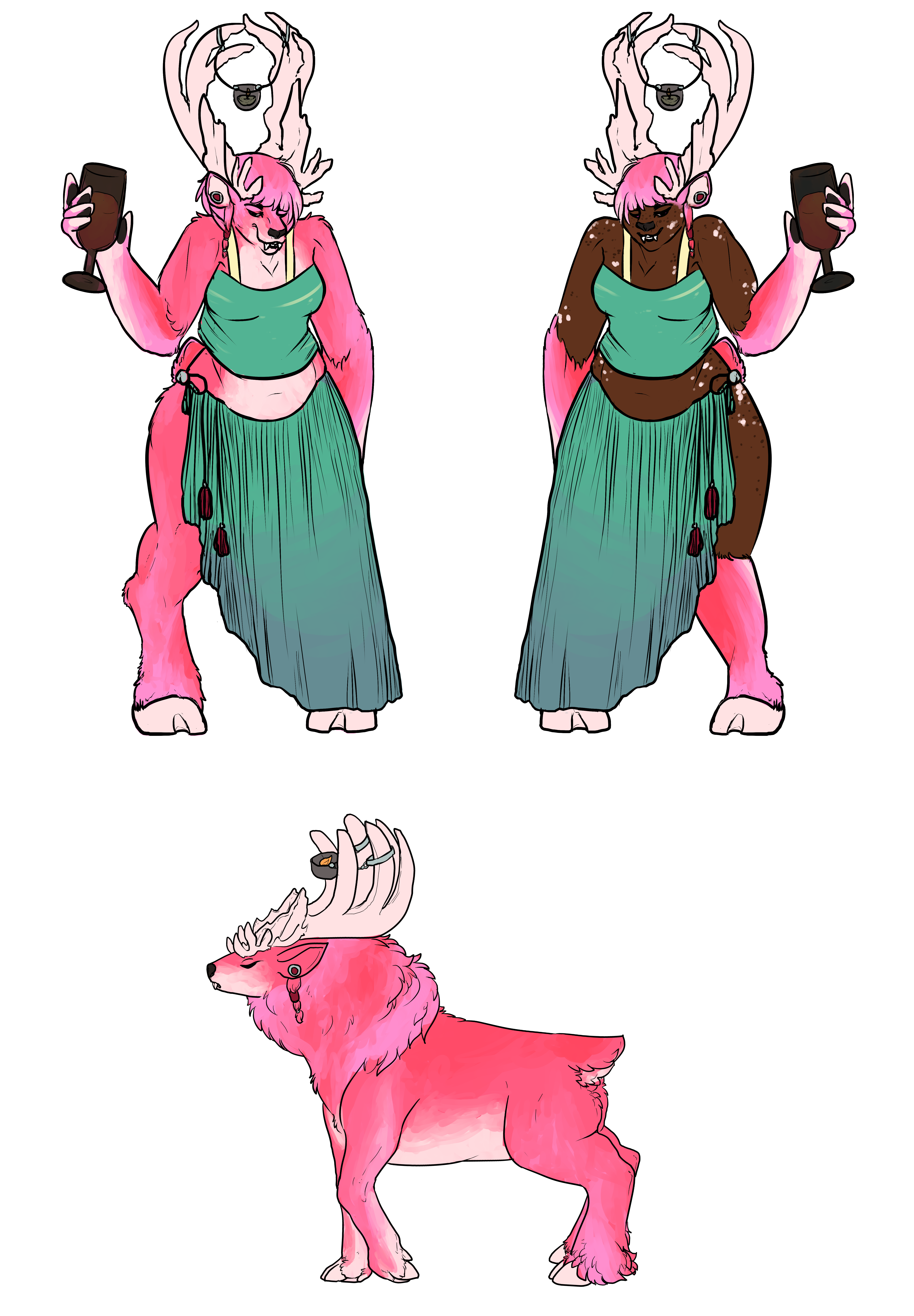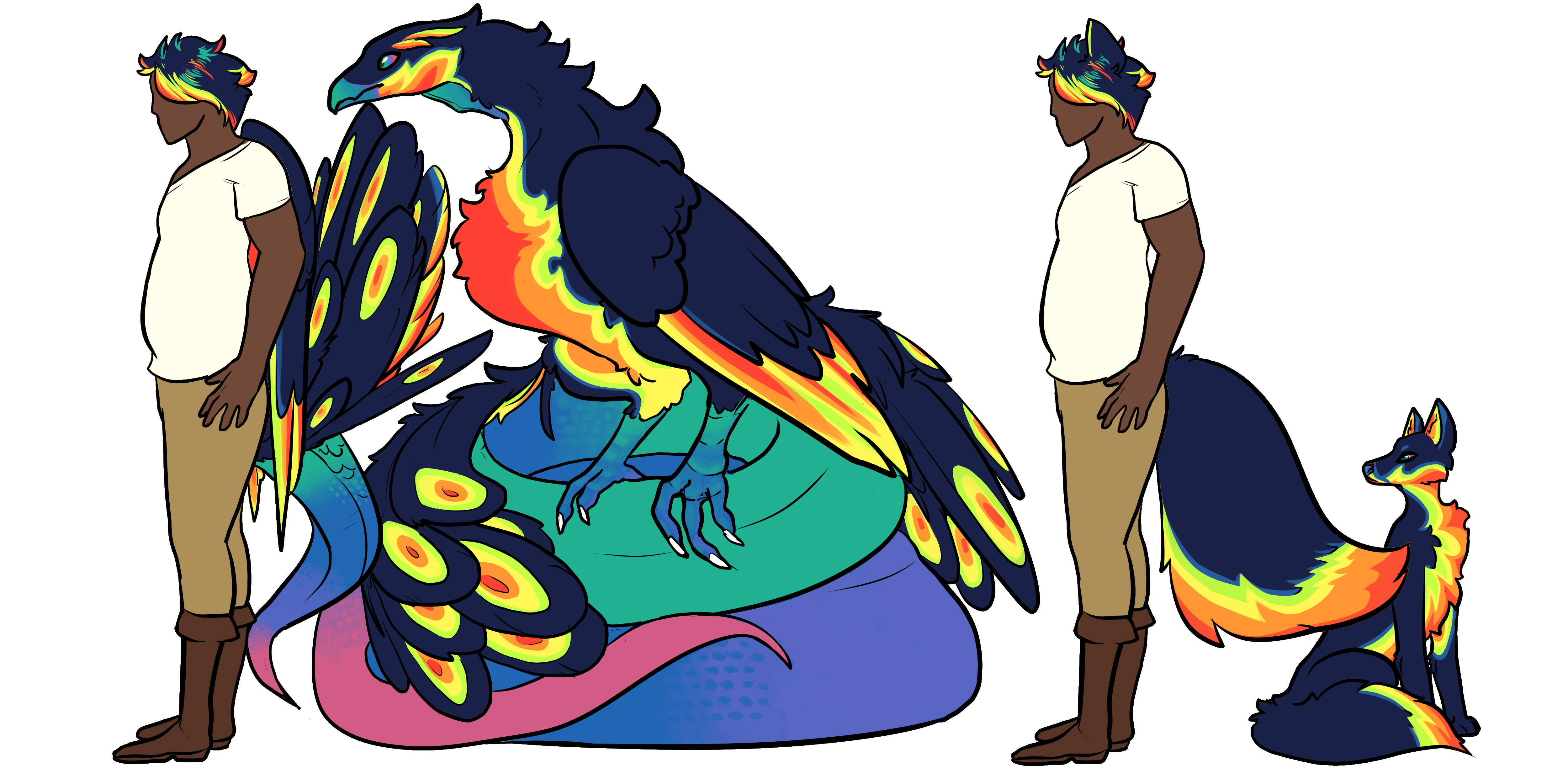ARAKANTIS
singular and plural: ARAKANTH referring to species as a whole: ARAKANTIS
pronounced like "AIR-ah-canth/AIR-ah-CAUN-tiss"
SPECIES TYPE: shapeshifter
LIFESPAN: fae-like (thousands of years)
REGION OF ORIGIN: laugk tj'is, vyldes
THE SPECIES
Venomous, colorful shapeshifter people. Being a sparkledog was a warning system about the poison in the old, primitive days thousands and thousands of years ago. Now it's just an excuse to celebrate color and light every day.
APPEARANCE

The Arakantis are a shapeshifter people with (typically) one animal form and one humanoid form, and the ability to shapeshift between them at will. In both forms, they typically have almost comically bright hair, fur, scales, and so on - reminiscent of tropical birds or poisonous frogs. It's theorized that this colorful nature comes from the old days when things were more wild and they would actually have to warn predatory creatures to stay away, but despite the species' ability to live thousands of years, no one remembers that far back.
They produce a mild venom they can inject via a bite. Side effects mainly include numbness and occasionally a sense of calm, but can cause paralysis in small animals. It has been considered as a mild local anesthetic, but is mostly used recreationally and in unofficial settings.
The Arakantis is considered to be a genetic relative to most shapeshifter species in Nskanetis, such as the Mjilikae and Nskanetian Werewolf. As one of the oldest shapeshifting species capable of shifting from beast form to a more humanoid form, as well as half-step forms in between that retain traits of both, this is more than likely to be true. The Arakantis people also had contact with the other shapeshifting species at the time of their evolution - or, more likely, branching off.
In humanoid form, Arakanth most commonly have a medium to dark skin tone and a somewhat more thickset and tall body build than a human. Their hair will almost always match their animal form's fur, scales, feathers, or whatever else they might have.

CULTURE
Arakantis culture is somewhat divided between Vyldes and Kortha Arakanth - while Arakanth can be found on other continents, those two contain the top populations.
Laugk Tj'is in Vyldes is where the species originally developed, and as such, contains more 'traditional' Arakanth culture. Much of the city has been built around the preferred aesthetics of Arakanth, which mainly include a large amount of color and light - sometimes to the point of becoming gaudy. After the Siege of Laugk Tj'is, Arakanth were considered endangered for a time, and left Laugk Tj'is for the safer Kortha, so to rebuild the population, many Laugk Tj'is Arakanth crossbred with humans and other species. Half-Arakanth typically keep the species' shapeshifting ability and often the bright color, but typically do not retain the long lifespan.
Many Arakanth in Kortha have adopted a culture of seafaring and even piracy. After their mass exodus - mostly via boat - from Laugk Tj'is during and after the Siege, seafaring became a part of their past and their culture. Piracy just became an extension of that for thieves and adrenaline-seekers. Due to the overall anarchy status of Nskanetis as a whole, it's often assumed by the inexperienced that doing harm to others won't be policed, but if you steal from others in Nskanetis, generally word will get out and someone will be called upon to steal back from you.
There are, of course, Arakanth who live their lives without having anything to do with the 'traditional' sorts in their societies. Traditional Arakantis culture is more a way to look into their past and explain the way their cities are formed than to explain individuals' behavior.
MESSENGERS
 Arakanth Messengers are a very rare subtype of Arakantis that can shapeshift into any animal and have a multicolored pelt made up of all colors of the rainbow. They are seen as a sign of good things to come at least, and sometimes deified. They are symbolized by a phoenix-like bird, sometimes with reptilian qualities, and typically with a blue-heavy color scheme - this symbol is also one of the main symbols of Laugk Tj'is itself.
Arakanth Messengers are a very rare subtype of Arakantis that can shapeshift into any animal and have a multicolored pelt made up of all colors of the rainbow. They are seen as a sign of good things to come at least, and sometimes deified. They are symbolized by a phoenix-like bird, sometimes with reptilian qualities, and typically with a blue-heavy color scheme - this symbol is also one of the main symbols of Laugk Tj'is itself.Part of their social standing and the reactions to them come from their heightened shapeshifting power when compared to other Arakanth, but other than that, it comes from how rare they can be. Messengers are technically a random mutation, and as such, several can show up at a time, but none can for a while as well. After the Siege of Laugk Tj'is, none showed up for centuries, for example - the emotional significance of this was notable, especially due to the death of many, if not all messengers known at the time in the Siege. It is mostly unknown what causes messengers to appear in the population, the two things that have contributed to a higher amount have been a higher concentration of magic in Nskanetis and a higher population of Arakantis in general.